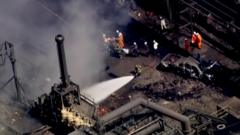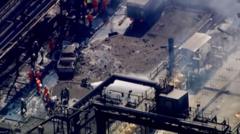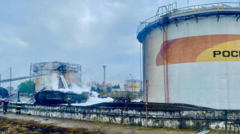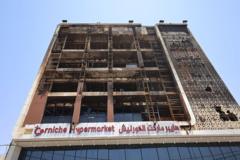At least 36 people were killed and dozens more injured in a tragic explosion at a pharmaceutical factory in Telangana, southern India.
Explosion at Telangana Pharmaceutical Factory Claims 36 Lives

Explosion at Telangana Pharmaceutical Factory Claims 36 Lives
Devastating blast in southern India raises profound safety concerns in manufacturing sector.
On July 1, 2025, the aftermath of the catastrophic event revealed extensive damage, as emergency responders continued their search for survivors among the wreckage.
Rescue teams were on the scene of Sigachi Industries in Sangareddy on Tuesday, inspecting the destruction caused by the explosion that ripped through the facility, which specializes in the production of microcrystalline cellulose used for medical capsules.
According to G.V. Narayana Rao, director of the state fire services, the blast, which occurred the day prior, is suspected to have originated from a pressure buildup within the factory's dryer system, leading to a catastrophic dust explosion.
Firefighters battled the flames for over a day, allowing rescue efforts to finally commence. While the situation remained critical for many of the injured, who suffered from burns and smoke inhalation, officials believe the death toll will not increase further.
This disaster marks the deadliest industrial incident in Telangana in over 25 years, raising alarm about safety protocols within India’s vast pharmaceutical manufacturing sector, which is crucial for the global healthcare supply chain.
In light of the tragedy, Indian Prime Minister Narendra Modi expressed his sorrow via social media, committing to provide financial assistance of 200,000 rupees, approximately $2,335, to the families of those who lost their lives.
As investigations continue, questions surrounding workplace safety in India's bustling pharmaceutical industry looms larger than ever before.
Rescue teams were on the scene of Sigachi Industries in Sangareddy on Tuesday, inspecting the destruction caused by the explosion that ripped through the facility, which specializes in the production of microcrystalline cellulose used for medical capsules.
According to G.V. Narayana Rao, director of the state fire services, the blast, which occurred the day prior, is suspected to have originated from a pressure buildup within the factory's dryer system, leading to a catastrophic dust explosion.
Firefighters battled the flames for over a day, allowing rescue efforts to finally commence. While the situation remained critical for many of the injured, who suffered from burns and smoke inhalation, officials believe the death toll will not increase further.
This disaster marks the deadliest industrial incident in Telangana in over 25 years, raising alarm about safety protocols within India’s vast pharmaceutical manufacturing sector, which is crucial for the global healthcare supply chain.
In light of the tragedy, Indian Prime Minister Narendra Modi expressed his sorrow via social media, committing to provide financial assistance of 200,000 rupees, approximately $2,335, to the families of those who lost their lives.
As investigations continue, questions surrounding workplace safety in India's bustling pharmaceutical industry looms larger than ever before.























